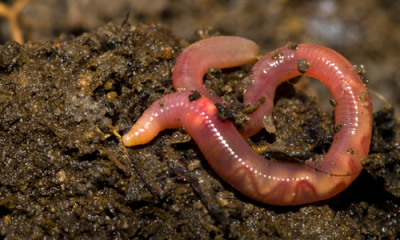
It is commonly believed that when an earthworm is cut in half-crosswise, it regenerates into two new worms. But this is not true. Earthworms do have the ability to regenerate lost segments. This ability varies between species and depends on the extent of the damage. They have a distinctive head and tail. They also have clitellum, a glandular and non-segmented section of the body wall, near the head. It secretes a sticky sac in which their eggs are deposited. When cut behind this clitellum, the head of the earthworm may survive and grow the tail, but the tail does not grow a head. The tail will die.
Some earthworms may amputate their tail when grasped by a predator. The tails would still move and distract their attacker. Species Eisenia fetida accumulates waste in its tail and when it cannot store any more, it amputates the tail. But none of these earthworm species grow head.
Amazing flatworm
However, there is a type of worm which can regenerate both head and tail. It’s a primitive worm, called the planarian flatworm, common to many parts of the world, living in ponds and rivers.
A planarian split lengthwise or crosswise will regenerate into two separate individuals. When cut into three, even the middle part grows both new head and tail. The worm has extraordinary regeneration capacity that it can reform its entire body from just 1/277th of its original body size. When planarian regrows its head, it even keeps its old memories intact. In 2017, an amputated planaria was sent aboard the International Space Station (ISS). After spending five weeks, it regenerated into a double-headed worm.
Picture Credit : Google




